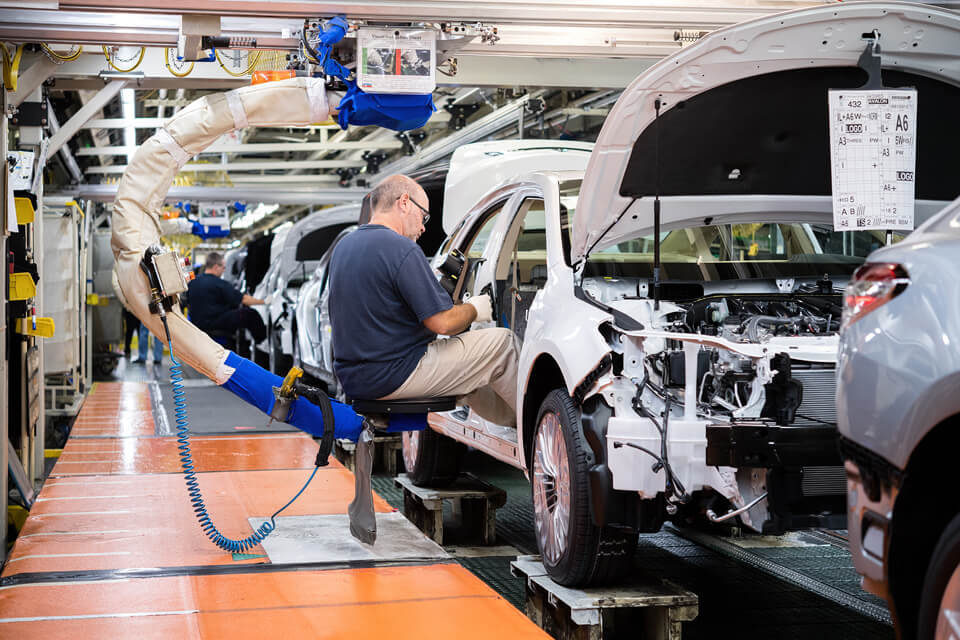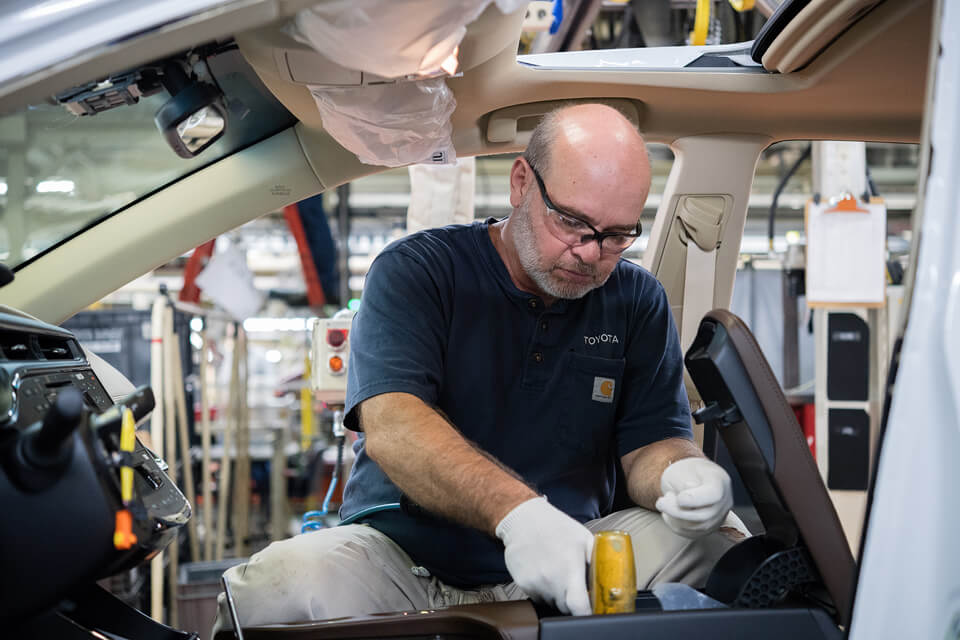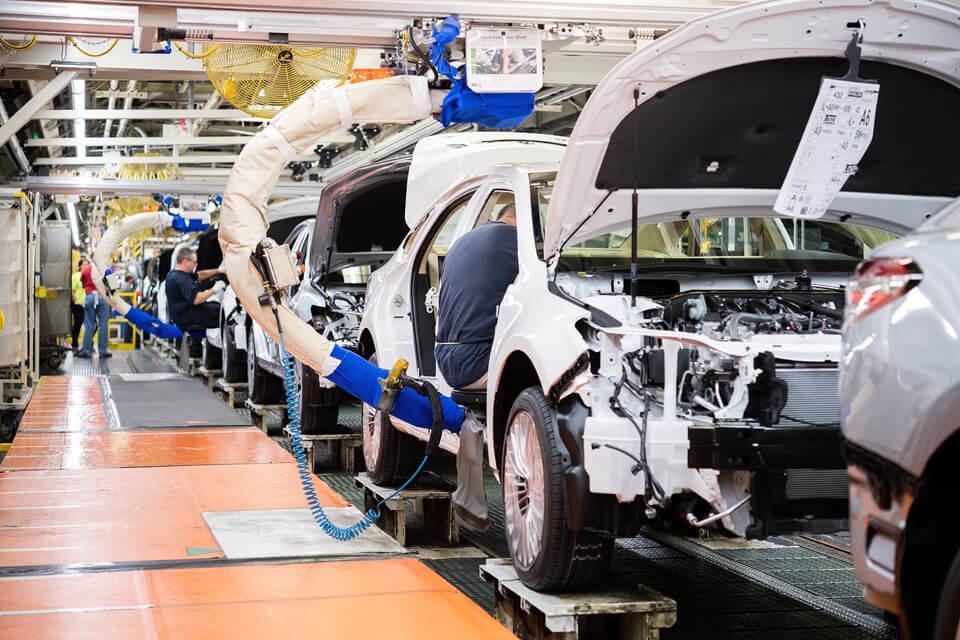
It is time efficient and employee proficient, and has more to do with catching fish than constructing automobiles.
So what’s it doing on the assembly line at Toyota Motor Manufacturing in Georgetown?
Visitors to the world’s largest Toyota manufacturing plant may recognize the raku seat as something they’ve sat in while casting a line from a bass fishing rig. That’s because this floating chair was innovated by a Toyota team member and fisherman who thought that the same casting seat technology that gives fishers range of motion on a boat could work when applied to cars.
 Attaching a bass boat seat to a swiveling arm to move team members into and out of a car also cuts down on wasted movement.
Attaching a bass boat seat to a swiveling arm to move team members into and out of a car also cuts down on wasted movement.
“That is a type of muda (waste) we try to eliminate in our processes,”said Justin Posey, Toyota Manufacturing Communication. “It is also an example of team member kaizen (continuous improvement) that is central to our company culture.”
Translated roughly to mean easy in Japanese, the smooth-gliding raku seat moves installers in and out of a vehicle to give them unimpeded access to even the most difficult-to -reach spots. The result? They get the job done without needing to be a contortionist.
-reach spots. The result? They get the job done without needing to be a contortionist.
Watch a video to see this innovation and many others as humans and robots work side by side to build the brand’s cars, including the Camry – the reigning bestselling car in America.


